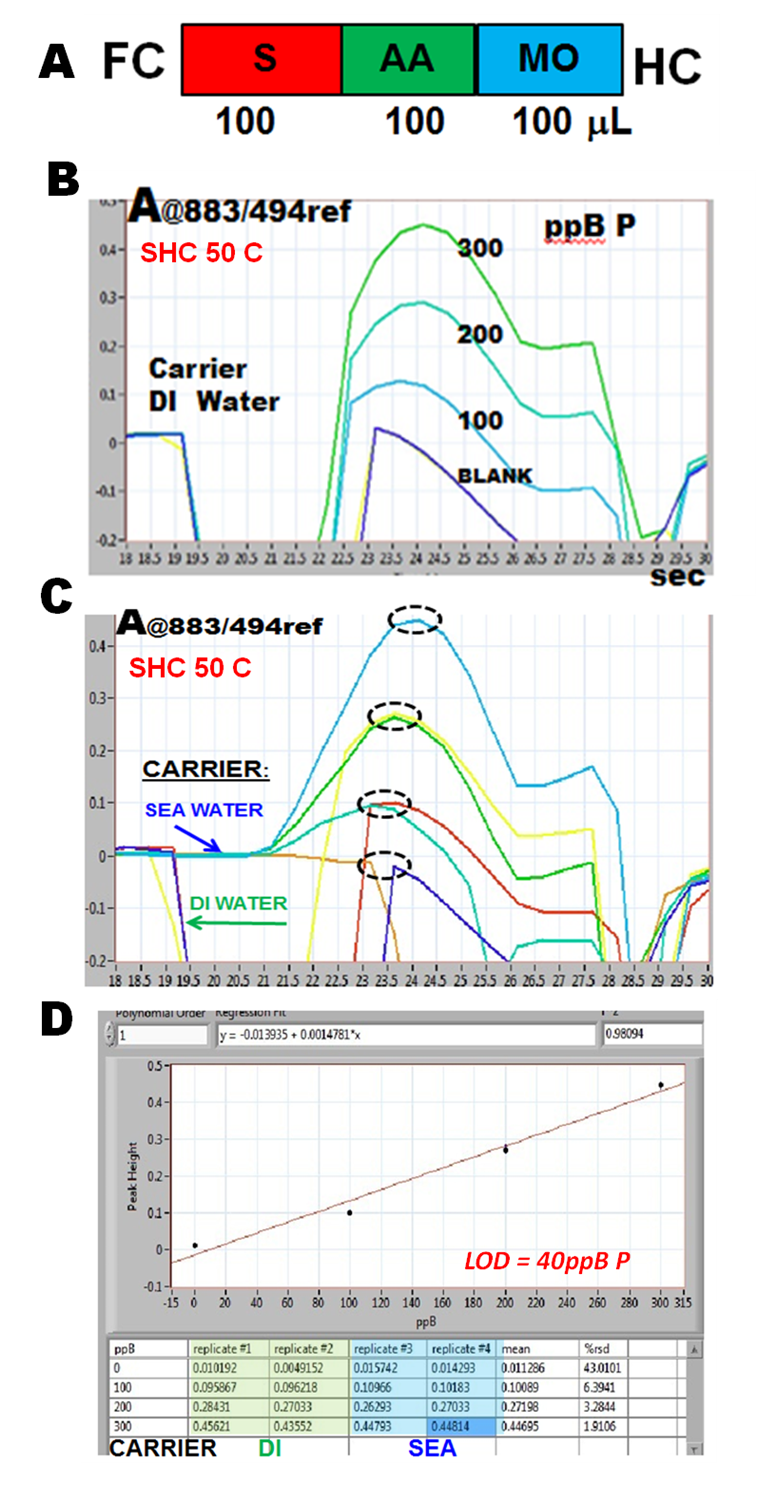Real life samples, such as sea water or soil extracts, contain high salt content, that influences the baseline absorbance throughout the sample run, mainly due to refractive index change at the interface between carrier and sample solution. Therefore sea water samples, even when analyzed by inverted sequence protocol (A), exhibit a dramatic drop of baseline absorbance, when deionized water is used as a carrier (B).
An alternative to this approach is to use sea water as a carrier (C), a way, which almost eliminates the baseline dip. Surprisingly, both approaches yield identical peak height values, as seen of the overlaid runs obtained with DI and sea water as carriers (C) and therefore also calibration lines, obtained with sea water standards with DI water and with sea water carriers, are identical (D). This is due to perfectly reproducible temporal resolution of baseline changes along the sample/reagent sequence, and due to the ability of the software to identify peak maximum, even as it shifts within 23 to 26 second time frame (C).
This is a valuable feature of SHC inverted sequence method, since the use of (open) sea water as carrier is advantageous for oceanographic surveys carried on board, while use of DI water is a routine approach on land.
Since the limit of detection of SHC technique is about 40 ppB P, (1.3 micro M P), assay of lower concentration has to be done by SFC method, described in the next page.
Phosphate in Sea Water
0 to 300 ppB, 105 s/hr
2.2.28.










